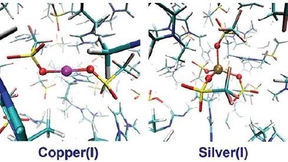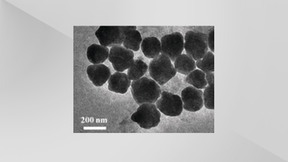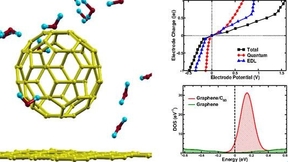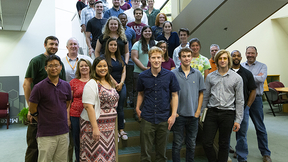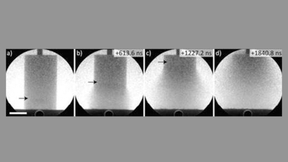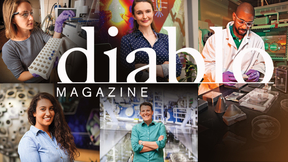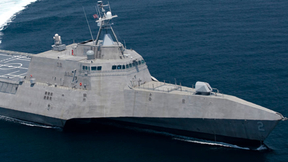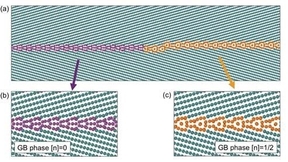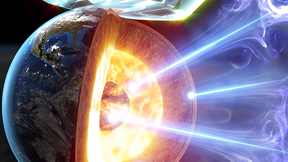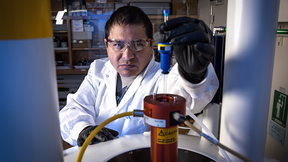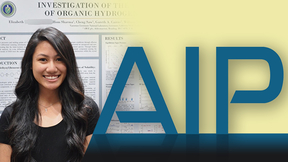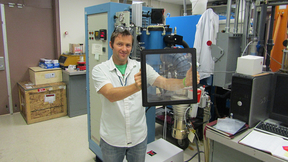Back
Understanding the behavior of metal ions in room temperature ionic liquids is essential for predicting and optimizing performance for technologies like metal electrodeposition. A recent paper by Livermore researchers describes a first-principles molecular dynamics simulations approach to understanding and comparing the key structural properties metal ions (Cu+ and Ag+) in…
A paper by Livermore researchers, in partnership with researchers at Brown University, has been designated a “hot paper” by the journal Angewandte Chemie. In this article, the authors describe a new technique to synthesize samarium-based nanomagnets and align them in a magnetic field to improve their performance. These show the highest saturation magnetization to date for…
Typically, superlattices—faceted crystals composed of nanocrystal building blocks—have been made using slow evaporative techniques that often take days to weeks to form highly crystalline solids. This process is difficult to control, which has made it hard to systematically tune film properties and has hindered quantitative study of the assembly process. To overcome these…
Understanding and controlling the electrical response at a complex electrode–electrolyte interface is key to the development of next-generation supercapacitors and other electrochemical devices. While it is largely acknowledged that the capacitive performance of these devices is governed by both the quantum capacitance of the electrode and the electric double layer…
Each summer, hundreds of college students from around the country flock to the Lawrence Livermore National Laboratory (LLNL) campus to participate in LLNL’s varied and unique internship opportunities. This year, Megan Freyman and Rene Mercado, both graduate students at the University of California, Santa Cruz (UCSC), joined 82 other students in one such opportunity—a newly…
Many high explosives contain carbon, which condenses during detonation to produce nanometer-scale graphite and diamonds. These forms of carbon and their particle growth reaction rates are neither well known nor easily measured because the optical opacity at the detonation front has, until now, hindered the measurement and study of detonation phenomena at nanoscale time and…
When researchers use kinetics to understand and predict the chemical behavior of reactive systems, the basic tool connecting the kinetics and the reactive system is the reaction mechanism. The characteristics and capabilities of current kinetic reaction mechanisms are the product of a great deal of directed evolution, which is motivated by the need to be able to model the…
Nanoporous metals are superior catalysts for chemical reactions due to their large surface area and high electrical conductivity, making them perfect candidates for applications such as electrochemical reactors, sensors and actuators. In a study published today in the journal Science Advances, Lawrence Livermore National Laboratory (LLNL) researchers, along with their…
Secretary of Energy Rick Perry recognized Lawrence Livermore National Laboratory (LLNL) chemist Bill McLean with a Secretary’s Achievement Award Wednesday in recognition of "pioneering technical contributions that have led to significant advancements in science-based stockpile stewardship." The Secretary’s Honor Awards are bestowed on individuals who have a singular…
Five Lawrence Livermore National Laboratory (LLNL) researchers join an eclectic group of entrepreneurs, writers, executives, philanthropists and more on Diablo Magazine’s annual "40 Under 40" list, which recognizes young professionals in the East Bay who are leading the charge in their fields. Louisa Pickworth, an experimental physicist and group leader in the Physics…
Graphene aerogel is lighter than air but as strong as steel, and it’s already proven useful in aerospace, energy storage and insulation. While there have been recent advances in 3D printing of the novel material, achieving complex structures has been elusive, hampering the unique material’s full potential. To date, 3D printing of graphene aerogel has been done using direct…
The program to extend the life of the W80 nuclear warhead recently achieved a significant milestone when the National Nuclear Security Administration (NNSA) gave passing grades to the plans to refurbish certain components and the proposed approach to developing component cost estimates. Passing the milestone confirms that the life extension program (LEP), dubbed the W80-4…
Researchers at Lawrence Livermore National Laboratory (LLNL) are lending their expertise in metal additive manufacturing to a new collaboration aimed at 3D printing critical replacement parts for the U.S. Navy. The Office of Naval Research recently announced an award of $9 million to fund a collaboration led by GE Global Research and aimed at developing a rapid process for…
Grain boundaries govern many of the properties of engineering materials, but until recently, computational techniques were not sufficiently powerful to predict grain boundary properties at elevated temperature, where they can undergo transitions from one structure to another. The study of grain boundary phase transitions is in its infancy, largely dominated by experiments…
At temperatures and pressures typically encountered on Earth’s surface, metallic elements naturally form compounds with electronegative elements. For example, iron reacts with oxygen to form rust, Fe2O3. In contrast, noble gas elements such as argon, neon, and xenon show very little reactivity with other elements. Under the extreme conditions at Earth’s core, however,…
During their 15 years as a certified laboratory for the Organization for the Prohibition of Chemical Weapons (OPCW), a score of LLNL chemists have developed some first-rate habits. One of them is earning “A” grades on the organization’s environmental proficiency tests. In recently-announced results, LLNL earned its eighth straight “A” grade during last fall’s OPCW…
It’s rare for an undergraduate science student to appear as an author on a scientific journal paper, and when they do, theirs is usually the last name on the list. However, Elizabeth Sangalang, a graduating senior studying biochemistry at California State University East Bay, has landed a second-author credential through the research she completed as a summer intern at…
A Livermore team has developed a first-of-its kind transparent ceramic scintillator that significantly improves throughput for CT-based 3D imaging for manufacturing and other applications.

